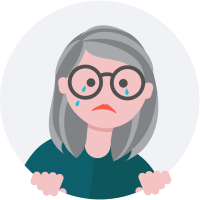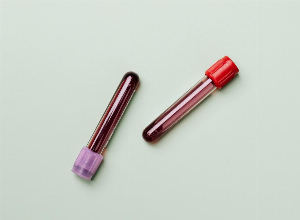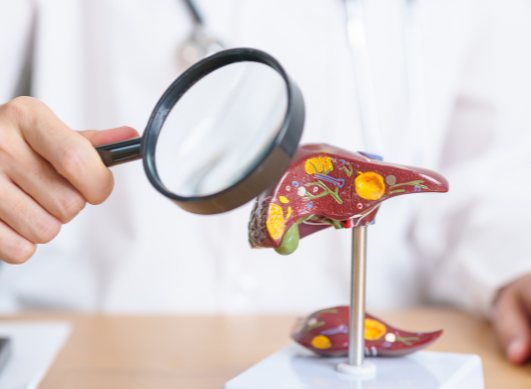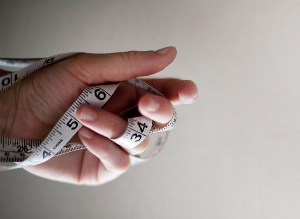NASH diagnosis: Carenity members tell their story
Published Feb 22, 2019 • Updated Mar 13, 2020 • By Josephine O'Brien
Our members affected by non-alcoholic fatty liver disease (NAFLD) and non-alcoholic steatohepatitis (NASH) have graciously told us about the journey with their diagnosis! Symptoms, emotions, tests and examinations, medical care, treatments... read their story with their diagnosis.
Survey conducted by Carenity with 115 patients living with NASH in the United States.


On average, patients waited 2 years to be diagnosed and the majority consulted just 1 doctor before reaching their diagnosis.
Fortunately for those suffering from NAFLD, the time period to arriving at a diagnosis was not too long, with the average time being 1-2 years from the initial sign of symptoms. During this period, respondents said that they experienced different symptoms with different severities. However, the majority of patients complained of the following symptoms:
Watery/Oily stools | Nausea | Fatigue | Weight gain | Stomach pain | Pain below ribs | Tenderness | Rashes | Vomiting | Elevated liver enzymes | Water retention
Before the diagnosis: the impact of NAFLD
We asked our members about the impacts the symptoms caused by NAFDL had on their daily life before reaching a diagnosis, and this is what they had to say:
 Chronic fatigue- 85%
Chronic fatigue- 85%
 Chronic pain - 57%
Chronic pain - 57%
 Hobbies and activities - 51%
Hobbies and activities - 51%
 Love life - 50%
Love life - 50%
 Family life - 42%
Family life - 42%
 Social life - 38%
Social life - 38%
 Professional life - 31%
Professional life - 31%
The majority of respondents reported that chronic fatigue had the greatest impact on their daily life before the diagnosis. Fortunately, 23% of respondents reported that only one part of their daily life was impacted by the symptoms prior to reaching a diagnosis. Members in general felt that the symptoms impacted their social or professional life the least.
Before diagnosis, only 21% of patients did their own research on the internet concerning their symptoms. A majority of those individuals reported using websites such as the Mayo Clinic, Healthline and the Liver Foundation, while several reported they did their research by typing their symptoms into Google and going from there.
Many respondents didn’t try any alternative therapies for their NAFLD such as homeopathy, with only 15% responding that they did. However, those who did try alternative therapies reported use of milk thistle, acupuncture, turmeric, dandelion root tea, grean tea and essential oils.
Being diagnosed with NAFLD: what you had to say
For many diseases, the road to diagnosis is peppered with a misdiagnosis/misdiagnoses. However, with NAFLD, only 20% of patients had a misdiagnosis before discovering they had NAFLD.
According to Carenity members, they were most frequently misdiagnosed with chronic fatigue syndrome, irritable bowel syndrome (IBS), fibromyalgia, mental illness, gallstones or an endocrine tumor.
Although only 20% of members reported a misdiagnosis, the misdiagnosis did result in causing considerable stress. One member said that they were constantly feeling “frightened for the future” and were in “constant pain”.
The shock of the diagnosis
How did patients react to their diagnosis?
 I didn’t feel anything in particular - 39%
I didn’t feel anything in particular - 39%
 It was horrifying - 17%
It was horrifying - 17%
 It was brutal - 19%
It was brutal - 19%
 It wasn’t a shock, I was expecting it - 15%
It wasn’t a shock, I was expecting it - 15%
 It was a relief - 10%
It was a relief - 10%
Finding out that you have NAFLD can be a frightening event, but 39% said they did not experience any particular sentiment whilst 11% of patients can’t remember how they felt at all.
The role of doctors and healthcare professionals
The role of the healthcare professional making the diagnosis is key. Sometimes patients do not feel sufficiently listened to or informed about their condition. The good news is that the majority of Carenity members felt that their doctor took time in discussing with them their NAFLD diagnosis while also being calm and emphatic. The main problem members felt with their medical care was the feeling that the practitioner didn’t care and they they were cold and distant delivering the diagnosis.
Some comments from respondents said that they appreciated that their doctor was "straight forward" while another described the delivery as being “blunt”. Two respondents claimed their doctor pressured them to admit they drink alcohol, when that certainly was not the case.
Fortunately, over all, the majority of respondents had positive feedback regarding their medical care and doctor, with most of them being encouraged to lose weight and make lifestyle changes.
>> Read our article about diet, exercise and NAFLD <<

43% - The doctor was very calm
33% - The doctor took the time to explain
23% - The doctor was very emphatic
2% - The doctor offered offered psychological support

21% - They looked like they didn’t care
16% - They were cold and distant
14% - They used cold and scientific language
13% - They were too fast explaining
The patient's struggle when facing NAFLD...
We asked our members how they felt emotionally after receiving their diagnosis, whether they felt renewed with determination now that they had a name for their symptoms/condition, or whether they felt despair for their future medical journey. Many members responded having felt several emotions at once and this is what they had to say:
27% of patients felt relieved by the diagnosis, but this was coupled with 43% feeling a great deal of anxiety. This anxiety was coupled with shock and surprise, according to 36% of respondents.
15% reported feeling lost, confused and alone; 17% felt anger about their diagnosis; 15% of patients felt they were being misunderstood; 21% felt discouraged.
Unfortunately, only 21% felt determined to fight the disease and 3% had confidence for the future while 19% felt despair.
How can diagnosing NAFLD be improved?
The above statistics about how patients felt following their diagnosis paints a "not so great" picture for those facing a diagnosis of NAFLD. We asked our members how they felt the process could be improved and a lot of respondents said they would have appreciated more support following the initial diagnosis.
More Information
The most resounding suggestion in improving the journey with a diagnosis of NAFLD is to simply provide the patient with more information about their NAFLD, what they can expect going forward, and how to manage it. This is what some members had to say:
"It should be explained what it is and why you have it and what can be done through diet, exercise or meds."
and
"An explanation about treating it. I got none and had to look it up myself."
Patients want their doctor to, “Bring patients back into the office and explain everything and offer tips to help with it other than just change your diet.”
In brief
Patients feel that their doctor should spend more time explaining to them what NAFLD implies and how they can manage the disease. One member said that they “weren’t aware it was a serious problem” because their doctor didn’t talk them through what was really going on.
Members want more detailed information and support from their healthcare providers, so that they don’t feel lost and discouraged going forward.

And what is your story?
Let's share our experiences and that of our loved ones in the comments on this article to improve diagnosis and cure NAFLD!
Carenity
1 comment
You will also like

Blood tests: How to read and understand the results of a liver function test
Nov 25, 2020 • 1 comment

 Facebook
Facebook Twitter
Twitter


